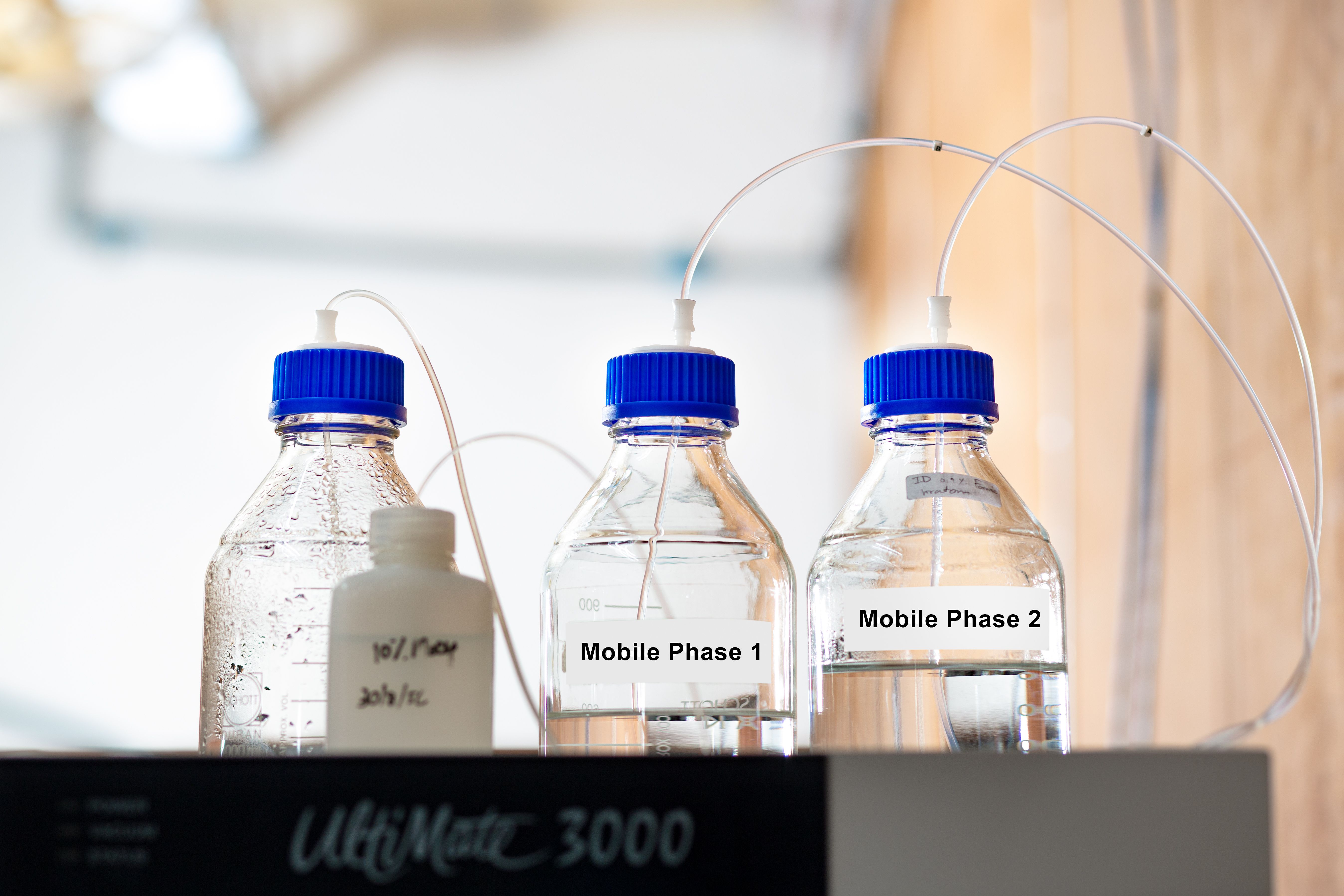Study Reveals Hydrophilic/Lipophilic Balance Impact on Porogenic Properties of Non-Ionic Surfactants for Chromatographic Separation
A research team has investigated the impact of hydrophilic/lipophilic balance (HLB) on the porogenic properties of non-ionic surfactants for chromatographic separation.
Researchers from Tanta University in Egypt and the University of Tasmania in Australia have conducted a study investigating the impact of the hydrophilic/lipophilic balance (HLB) of non-ionic surfactants on their porogenic properties for monolith preparation and chromatographic separation (1). The findings of the study, published in the Journal of Chromatography A, shed light on the role of surfactants in creating suitable monoliths and provide criteria for selecting the appropriate non-ionic surfactant based on its HLB value.
Mobile phase glass bottles of Liquid Chromatography Mass Spectrometry LC MS instruments. The instrumental LC MS was used for advanced analysis in the pharmacology, chemistry and other research labs. | Image Credit: © S. Singha - stock.adobe.com

Investigating the impact of the HLB of non-ionic surfactants on their porogenic properties for monolith preparation and chromatographic separation involves studying how the HLB value influences the behavior and performance of these surfactants in creating separation media. The HLB value represents the relative balance between the hydrophilic (water-loving) and lipophilic (oil-loving) characteristics of the surfactant molecule. By varying the HLB value, researchers can examine how it affects the resulting porosity, surface area, and separation efficiency of the prepared monoliths. This investigation provides insights into the relationship between surfactant properties and their ability to generate porous structures, enabling optimization of surfactant-based porogenic mixtures for specific chromatographic applications. Understanding the impact of HLB on porogenic properties contributes to the development of more efficient and tailored separation media in chromatography.
The research involved examining the microporogenic properties of Brij surfactants, specifically polyoxyethylene ethers of various chain lengths, to understand the effects of HLB on monolith preparation and chromatographic separation. Seven different porogen compositions were initially prepared, and the highest efficiency was achieved using a mixture of decane, decanol, and dodecanol with Brij 30. Subsequently, four other Brij surfactants with varying HLB values covering the entire HLB scale were tested. The prepared monoliths were characterized using techniques such as scanning electron microscopy (SEM), Brunauer-Emmett-Teller (BET) analysis, Fourier transform infrared spectroscopy (FT-IR), and chromatography.
The results demonstrated that increasing the HLB from 9.72 to 18.84 led to an increase in monolith density and surface areas. The optimum range for HLB was found to be 10 to 15. Surfactants with lower HLB values resulted in either nonporous columns or less efficient separations, while those with higher HLB values yielded non-permeable columns. It was also discovered that adjusting the HLB was possible by mixing surfactants with different HLB values.
The prepared monoliths showed promising capabilities in chromatographic separations. Using an isocratic mode with a mobile phase consisting of a mixture of acetonitrile and water (20:80, v/v) at a flow rate of 1.5 μL/min, the monoliths successfully separated a variety of compounds. The elution order of the compounds correlated with their lipophilicity, with sulfamerazine (logP = 0.52) eluting first and sulfaquinoxoline (logP = 1.70) being the most retained. The monoliths also exhibited good asymmetry factors and resolution when separating sulfa drugs, nonsteroidal anti-inflammatory drugs, and benzoic acid derivatives.
This study provides valuable insights for optimizing porogenic mixtures based on surfactants to achieve desired porosity, surface area, morphology, and chromatographic separation requirements. The understanding of the relationship between HLB and porogenic properties contributes to the development of improved monoliths for efficient chromatographic separations in various applications.
Reference
(1) Mansour, F.R.; Hilder, E.F.; Algethami, F.K.; Alomar, T.; Arrua, R.D. Effect of hydrophilic/lipophilic balance on the porogenic properties of non-ionic surfactants for monolith preparation and chromatographic separation. J. Chromatogr. A 2023, 1699, 463991. DOI: 10.1016/j.chroma.2023.463991

.png&w=3840&q=75)

.png&w=3840&q=75)



.png&w=3840&q=75)



.png&w=3840&q=75)




